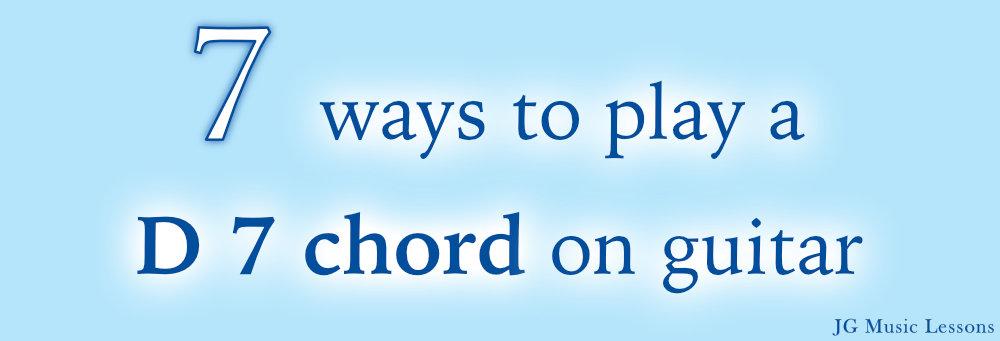The D 7 chord (D dominant 7) is a less commonly known chord when first learning to play guitar.
Like the D chord, the D 7 chord also has easy open chord shape but there are many other ways you can play this chord throughout the guitar fretboard. By knowing different D7 chord variations, you’ll be able to use them in different musical contexts.
We’ll first go over some basic chord theory and then cover 7 ways to play an D 7 guitar chord which you can start to incorporate into your playing.
Grab your guitar and let’s get started!
D 7 chord theory intro
The 7 next to the chord refers to a dominant chord which is built upon the chord tones 1, 3, 5, and b7. This is essentially a Major triad chord with the additional b7 chord tone. Dominant chords are often used as the 5 chord in a chord progression before resolving to the 1 chord of a key center.
For example, the D 7 chord has the chord tones D, F#, A, and C. This is essentially a D Major chord with an added b7 chord tone.
Here is the dominant 7 chord formula below.
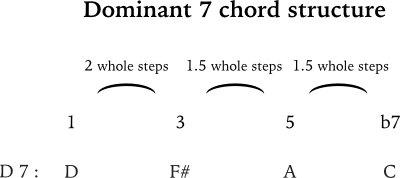
In contrast, minor 7 chords contain the chord tones 1, b3, 5, and b7. For example, a D minor 7 chord would contain the chord tones D, F, A, and C.
Now that you know what notes belong to the chord structure, let’s look at how to read the chord charts.
How to read the chord charts
For the charts below:
- The top horizontal line of the chord chart represents the high E string and the bottom horizontal line represents the low E string.
- The vertical lines separate each fret.
- The numbers in the blue dots tell you which fingers to use on the fretting hand.
- The letters on the right of the charts tell you what notes you are playing on each string.
- Circles on the left represent open strings.
- Red X means to avoid that string.
You can check this link for more on how to read guitar notation symbols.
D 7 open chord
This first shape is a very easy way to play a D 7 chord. The only difference in notes with an open D chord is the 2nd string, 1st fret instead of playing the 2nd string, 3rd fret.
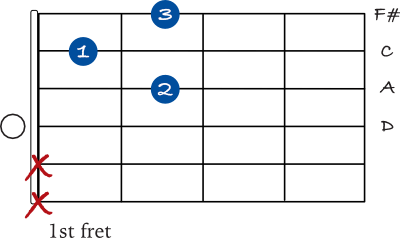
D 7 chord on the 5th string
Here is another way to play a D 7 chord starting on the 5th string, 5th fret with your 3rd finger. This D 7 chord originally comes from an open B 7 chord shape.
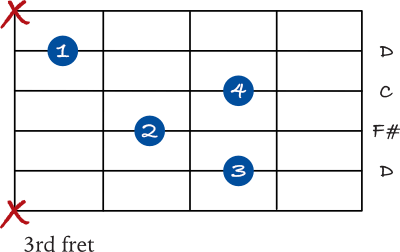
D 7 barre chord on the 5th string
This next D 7 chord uses a barre with your 1st finger, starting on the 5th string, 5th fret. If you can’t get the chord to sound clear, first try to get the notes from the 5th to the 2nd string. Then as you develop more strength in your fingers, you can try adding the 1st string as well.
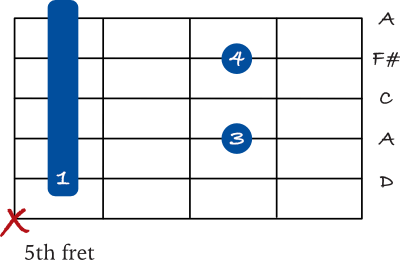
This shape comes from the open A 7 chord except you rearrange your fingers when barring this chord.
If needed, check out these 5 tips to get better at playing barre chords on guitar.
D 7 barre chord on the 6th string
This shape is the same as the open E 7 chord except you have to rearrange your fingers as you barre the 10th fret with your 1st finger.
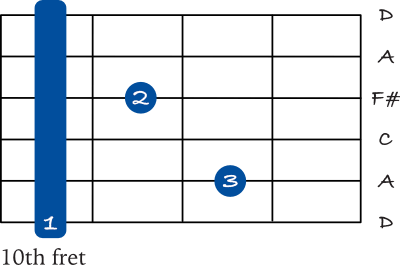
Again, if this chord is not ringing out clearly, first try getting the notes from the 6th string to the 3rd string since they make up the majority of the chord structure. Then review and come back to try playing through all the strings without buzzing or muffled notes.
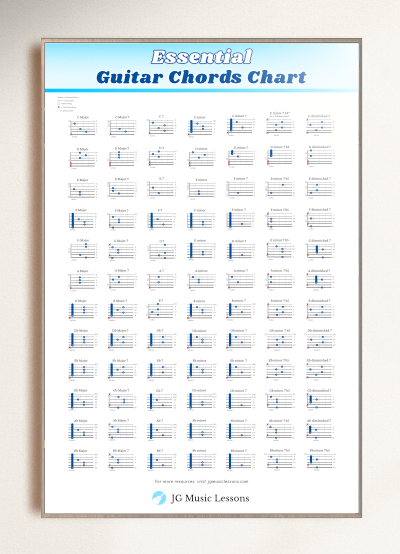
D 7 drop 2 chord – 1st inversion
This shape uses a drop 2 chord voicing, which is a method of reorganizing chord tones by dropping the 2nd highest chord tone an octave below. In this case, the 3rd of the chord is moved down to the 4th string.
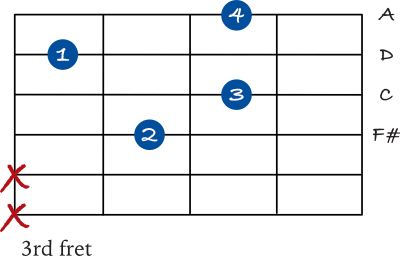
D 7 drop 2 chord – 2nd inversion
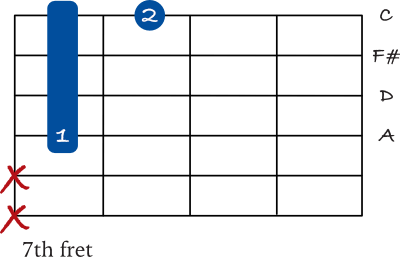
D 7 drop 2 chord – Root position (12th fret)
If your guitar is suitable to play past the 12th fret, here is one last chord which comes from the open D 7 chord except you have to rearrange your fingers when you add the 1st finger.
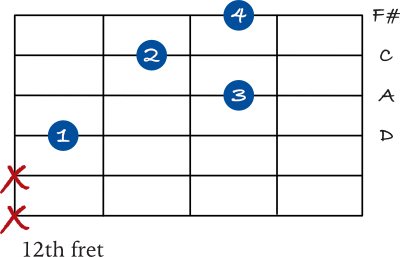
Wrapping up
All these chords were mostly in root position, meaning the root note is in the bass. However, you have even more variations if you use different chord inversions. This is when you play a chord with notes other than the root in the bass.
It’s good to know many possibilities of playing the same chord because you have more flexibility to move around the fretboard. Also, you can use different chord variations when you need a certain note at the top to help define a melody that you are playing over.
I hope this helped you understand how to play a D 7 guitar chord or learn new ways of playing it. You can also try shifting the shapes that have all fretted notes to play other dominant chords on the same string.
If you’re interested in improvisation, you can learn how to play Dominant 7 arpeggios on guitar or 7 jazz and blues licks over a Dominant 7 chord.
To learn related chords, see how to play a D Major 7 or D minor 7 chord on guitar.
📘 Get the free guitar practice guide here!
All the best,
JG Music Lessons
📙 Kickstart your guitar playing with our step by step guide: Guitar Essentials.
🎸 Looking for a travel or half-sized guitar? See this one.
🛠 See our other music recommendations.
🤝 Support the site to help us to create better content for you!
Level up with the FREE guitar practice guide and effectively improve your playing! 🎸
Get it sent to your email!

